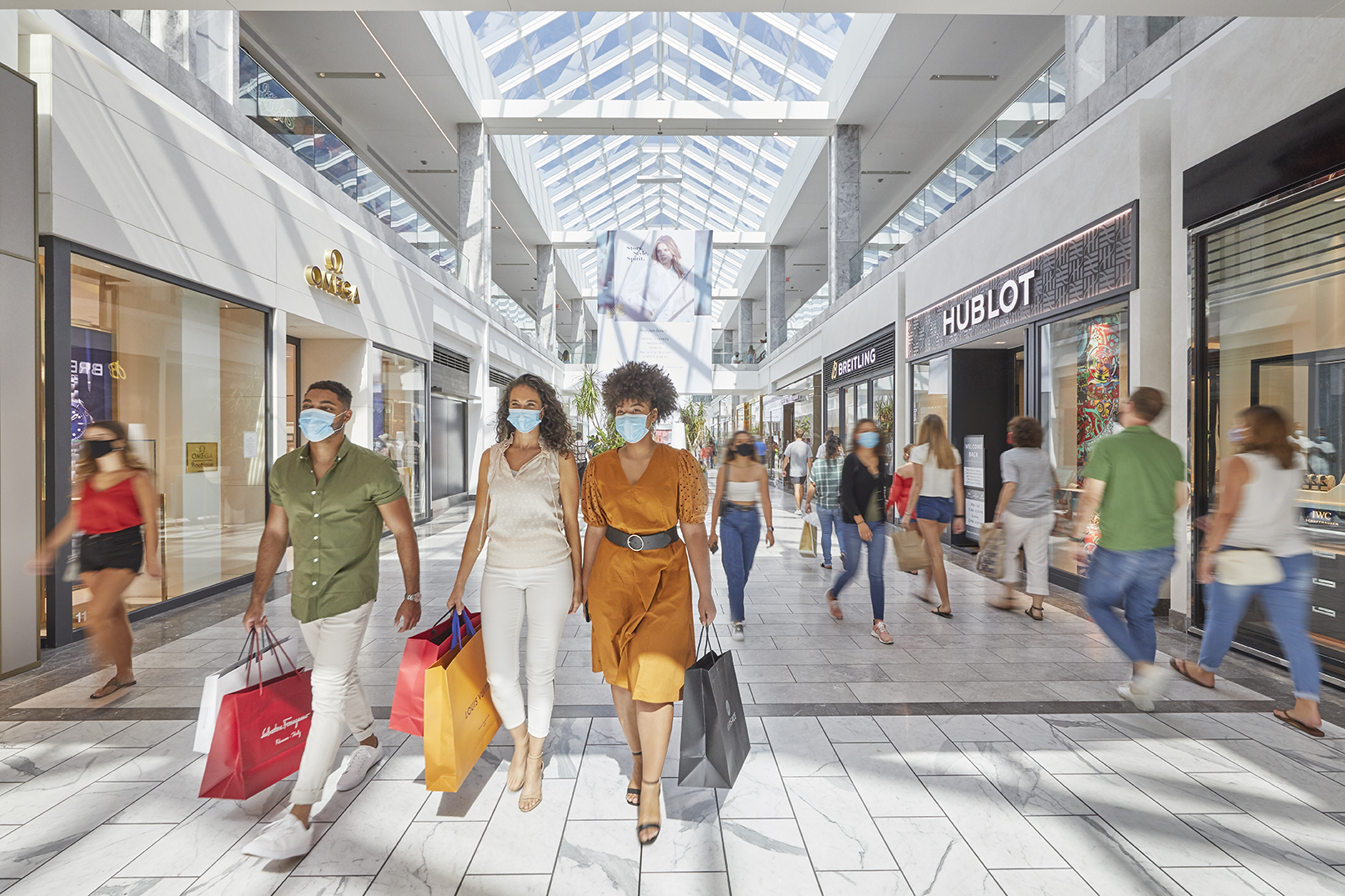More consumers will return to brick-and-mortar stores for annual gift purchases this holiday season, with in-store sales expected to jump significantly compared to 2020. Faced with the prospect of higher costs and hard-to-find items, shoppers are expected to put gift cards at the top of the gift-giving list in order to avoid package delivery delays and in-store merchandise shortages, due to well-publicized supply chain challenges.
CBRE’s annual Holiday Trends Guide highlights trends in both retailing and consumer shopping, as well as the impact of those shifts on the U.S. commercial real estate retail market.
Holiday retail sales figures are comprised of U.S. retail sales in November and December, excluding auto, gas, and restaurants. Various sources1 forecast total holiday sales to increase between 7% and 10.5% this year. Based on U.S. Census Bureau data and a range of industry estimates, CBRE anticipates an increase of 8.4% from last year to more than $800 billion. Brick-and-mortar retail sales, which were essentially flat last year, when COVID concerns dissuaded some shoppers from venturing out, are expected to rise by 8%, a 10-year high, as shoppers return to stores. E-commerce will expand as well, rising between 10% and 15%, according to various industry estimates.
READ ALSO: Greater Phoenix retail vacancy returns to pre-pandemic level
“While Arizona did not have an elongated mandated shutdown or restrictions like many other parts of the U.S., there was still some hesitancy toward in-person shopping during the last holiday season,” said Phoenix-based First Vice President Todd Folger. “This year, while Covid is still with us, I anticipate a strong desire by consumers to get out and shop and enjoy a more normal holiday season.”
He added, “Generally speaking, the weather in Phoenix is always a big driver of foot traffic. Because of that, the holidays are our peak season for shopping, dining and entertainment. I anticipate the outdoor centers and lifestyle centers will have a slightly higher uptick in traffic, however the operators of the indoor malls here in Phoenix have done a great job of emphasizing sanitation protocols and safety checks that will allow the consumer to feel very comfortable getting out and shopping this year.”
A National Retail Federation (NRF) survey shows that consumers plan to make more in-store purchases in most categories, including department stores, discount stores, grocery, outlets and small shops.
But keeping the shelves stocked won’t be easy for retailers.
With supply chain bottlenecks and national warehouse vacancy at a historic low of 3.6%, retailers will have to be prepared to avoid inventory shortages. The ratio of retailers’ inventory levels to sales plummeted this year to 1.10 in August – compared to 1.47 prior to COVID, according to data from the Federal Reserve Bank of St. Louis.
Many retailers are turning to costly air freight to get more products to locations on time. In most cases, consumers can expect to see these rising transportation and supply chain costs reflected in higher prices at the checkout counter.
In addition, the holiday season is typically a massive hiring period for the retail industry, but labor shortages loom. As of August, there was an estimated 1.2 million job openings in the retail trade, according to the US Bureau of Labor Statistics, a rise of 62% year-over-year. Many smaller retailers may struggle to find the labor they need to handle the holiday rush.
“Obstacles definitely remain this season,” said Folger. “While I believe most consumers will tolerate inflation to some extent, supply chain restraints and labor shortages are certainly big hindrances to a full recovery. It could mean that the holiday season will start earlier than usual for the savvy consumer who is looking to avoid delays in shipments, delivery of product to the stores for in-person shopping, and costly delivery prices.”
Read the entire report here.




